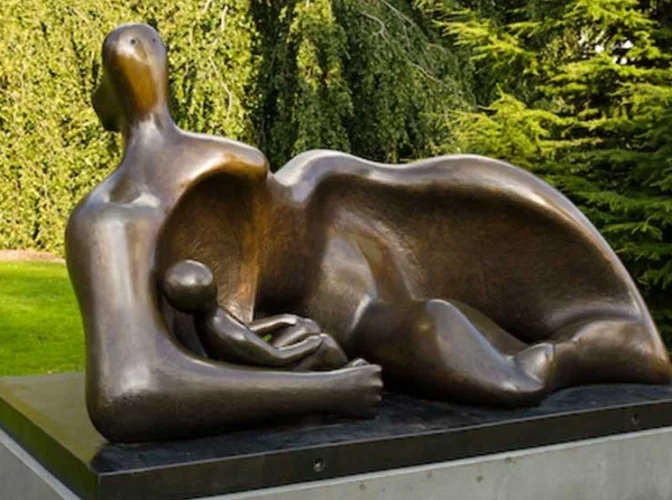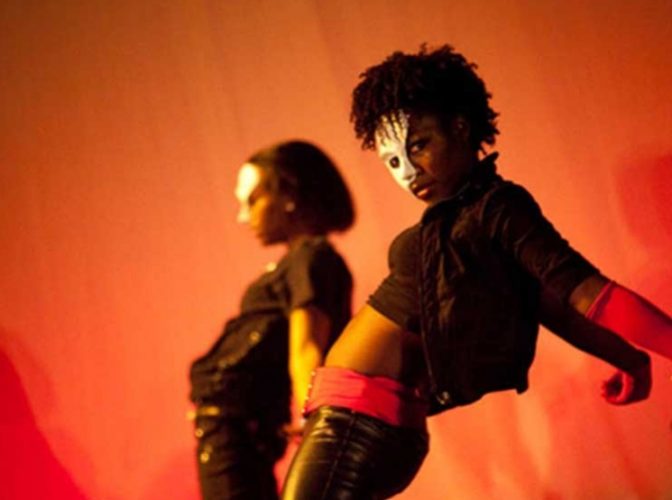We have built a legacy of broadening access to the arts, supporting artistic excellence, and preserving cultural heritage from celebrating Henry Moore and revitalising Shakespeare’s home stage, to empowering student creativity at Columbia University.

Henry Moore Galleries at Tate Britain
We are proud to have played a part in reintroducing Henry Moore, one of Britain’s most significant modern artists, to new audiences. Moore’s monumental sculptures were once icons of British post-war identity, but by the early 2000s, his work was less visible, especially in London.
To help restore Moore’s profile, in 2008 we funded a landmark outdoor exhibition at Kew Gardens, showcasing 28 of his large-scale works in a spectacular natural setting. The exhibition attracted more than 600,000 visitors in six months, with 150,000 schoolchildren and young people attending thanks to Gatsby-funded free tickets.
This momentum culminated in our support for Tate Britain’s creation of two permanent galleries dedicated to Moore. Opened in 2013, the Henry Moore Galleries feature a rotating display of sculptures, maquettes, drawings, photographs and archival material. These galleries not only showcase Moore’s artistic journey, from early carvings like Recumbent Figure to his major public commissions but also tell the story of how Tate’s collection grew, aided by early champions like Robert Sainsbury.
Tate renovated the spaces to accommodate Moore’s imposing pieces, reinforcing floors and designing interpretive displays to engage contemporary audiences. Our involvement ensured that Moore’s art once again had a prominent place in the nation’s cultural life.

Royal Shakespeare Theatre Redevelopment
We supported the transformation of the Royal Shakespeare Theatre in Stratford-upon-Avon with the ambition that Shakespeare’s plays could be experienced in a setting that matched their legacy. The existing theatre opened in 1932 and whilst visually striking, design challenges such distant seating, poor acoustics and limited accessibility hindered the experiences of performers and audiences alike.
The Royal Shakespeare Company (RSC) launched an ambitious £113 million redevelopment to address these issues. Gatsby contributed £16 million to the project, with Susie Sainsbury chairing the project committee. The reimagined theatre retains the original art deco shell but features a 1,000-seat thrust-stage auditorium, with the furthest seat now only 15 metres from the stage, bringing the audience closer to the action.
Beyond the stage, the building was made fully accessible, new public spaces were added including a rooftop tower, and restaurants and outdoor riverside areas improved. These enhancements have made the venue a welcoming space for all, whether attending a performance, or simply visiting. The Royal Shakespeare Theatre reopened in 2011 with productions of King Lear and Romeo and Juliet, and we were proud to have played our part in reaffirming the theatre’s role at the heart of Britain’s cultural identity.

Columbia University Arts Initiative
In 2006, we began our support of Columbia University’s pioneering Arts Initiative, which aimed to make experiencing art an integral part of student life, regardless of what students were studying. The initiative was born from a realisation: at one of the world’s leading universities, students had little visibility or access to the rich arts activity around them. The Columbia Arts website, launched alongside the Initiative, became a vital portal, connecting students with events, opportunities, and grants.
Central to our contribution was the Gatsby Charitable Foundation Student Support Fund. It enabled students across Columbia’s diverse academic schools – from Engineering and Law to Public Health and International Affairs – to initiate their own artistic projects outside the curriculum. In its first five years alone, the Fund supported over 300 student-led ventures in disciplines ranging from film and theatre to literature and visual arts.
To expand horizons beyond campus, our support also included subsidised tickets for New York’s rich cultural offerings, ensuring students could access world-class theatre, opera and music. For many, these experiences sparked a lifelong connection with the arts.
Although our funding has now concluded, Columbia’s Arts Initiative continues to thrive, proof that sustained early investment can embed creativity deep within a university’s culture.